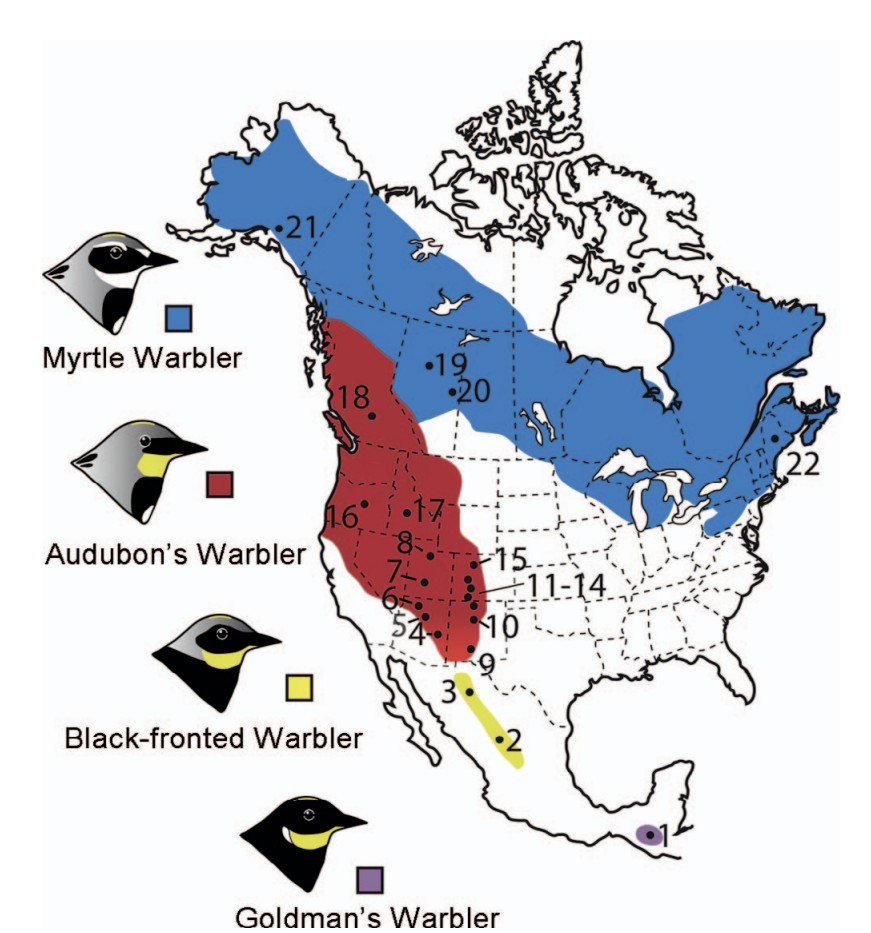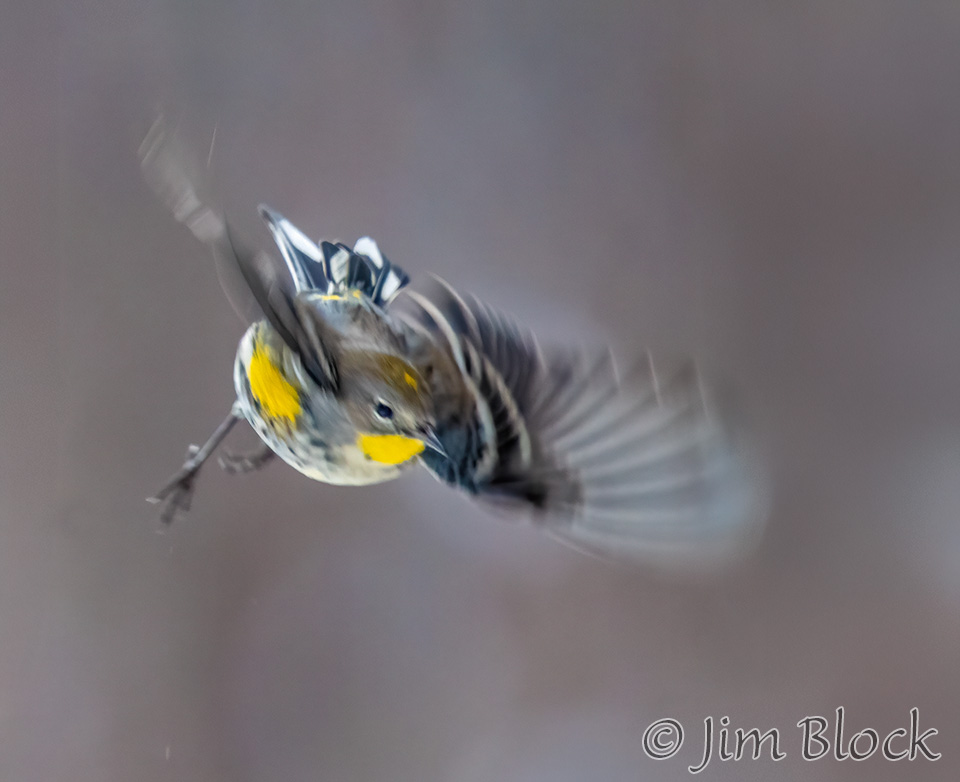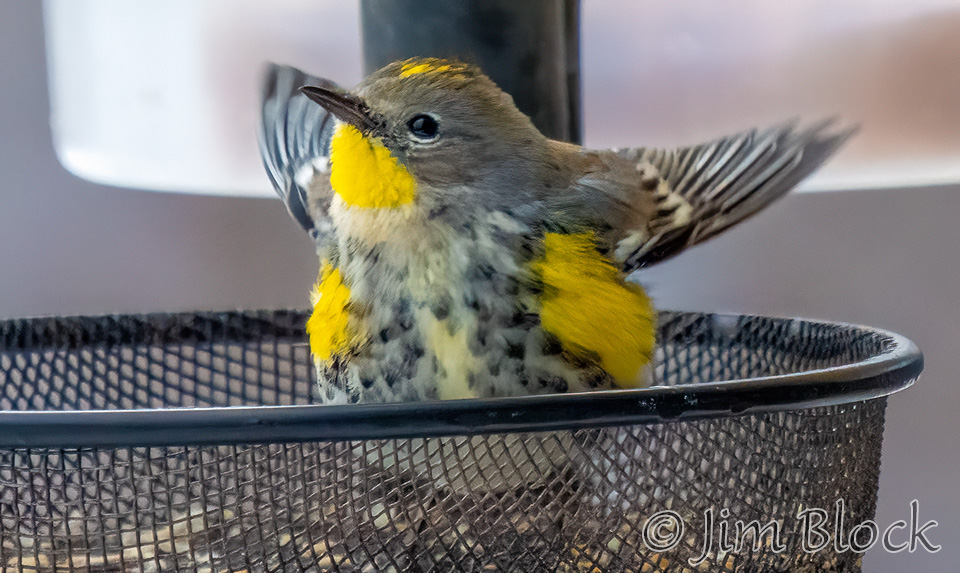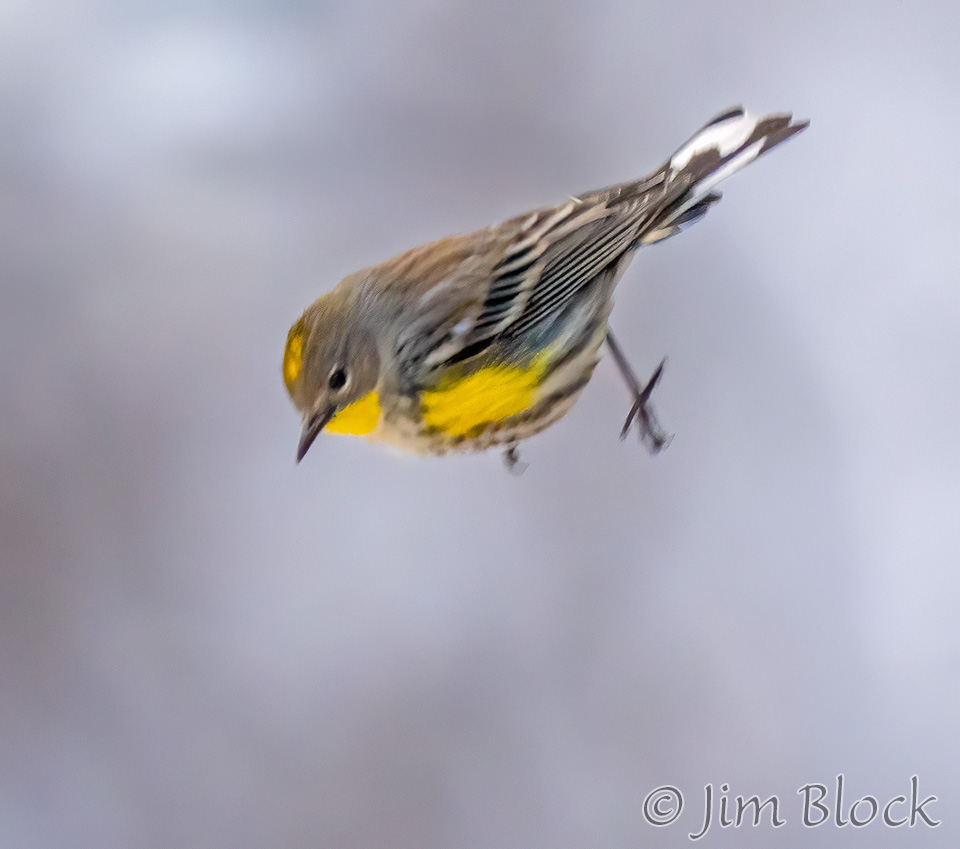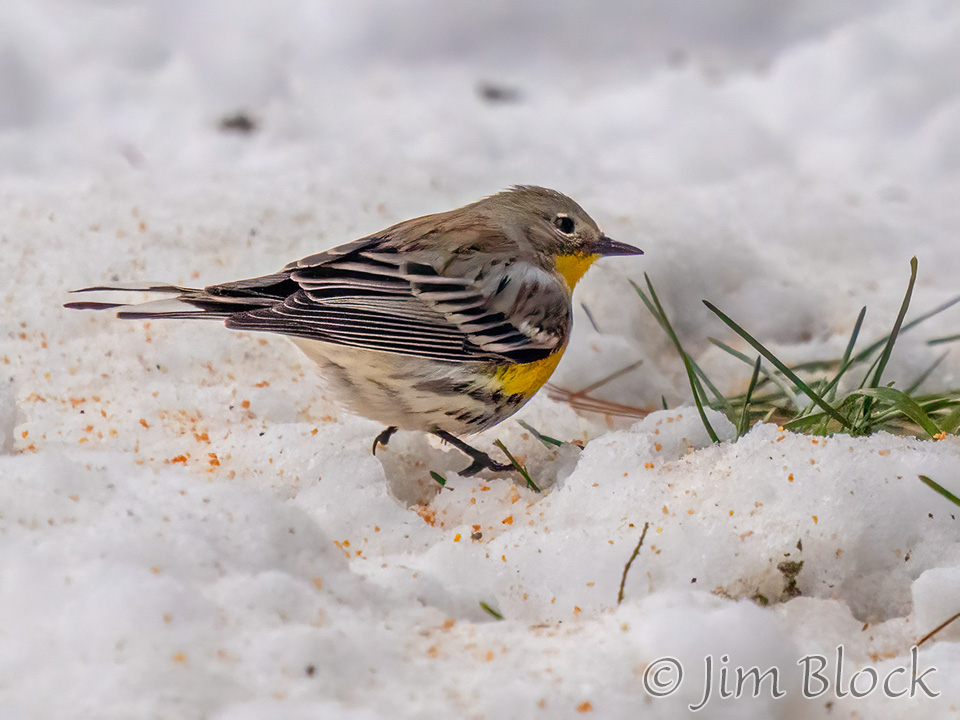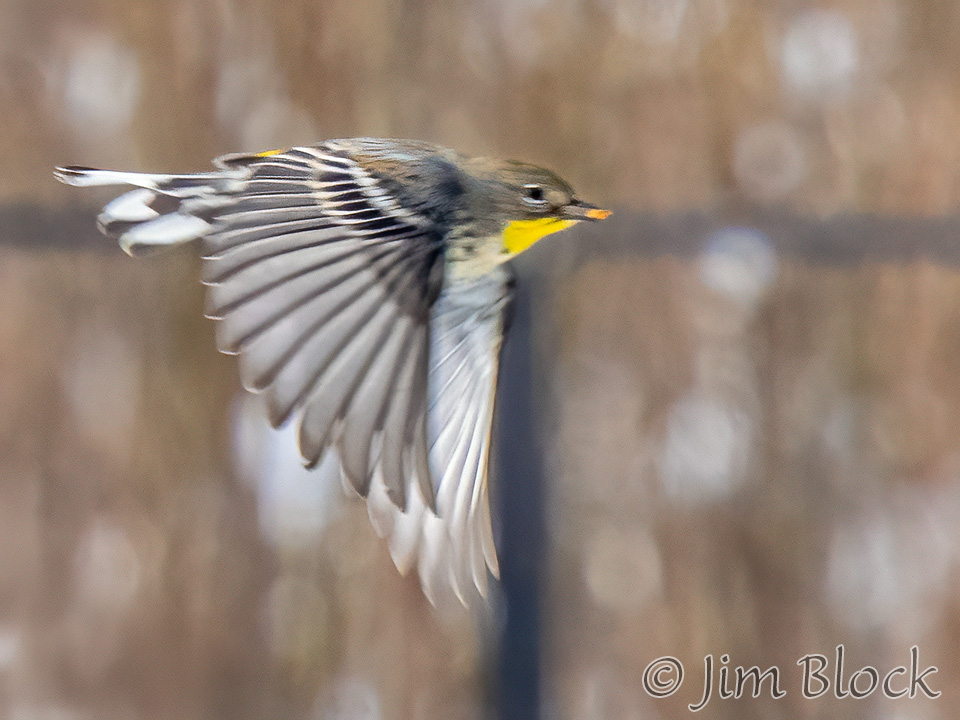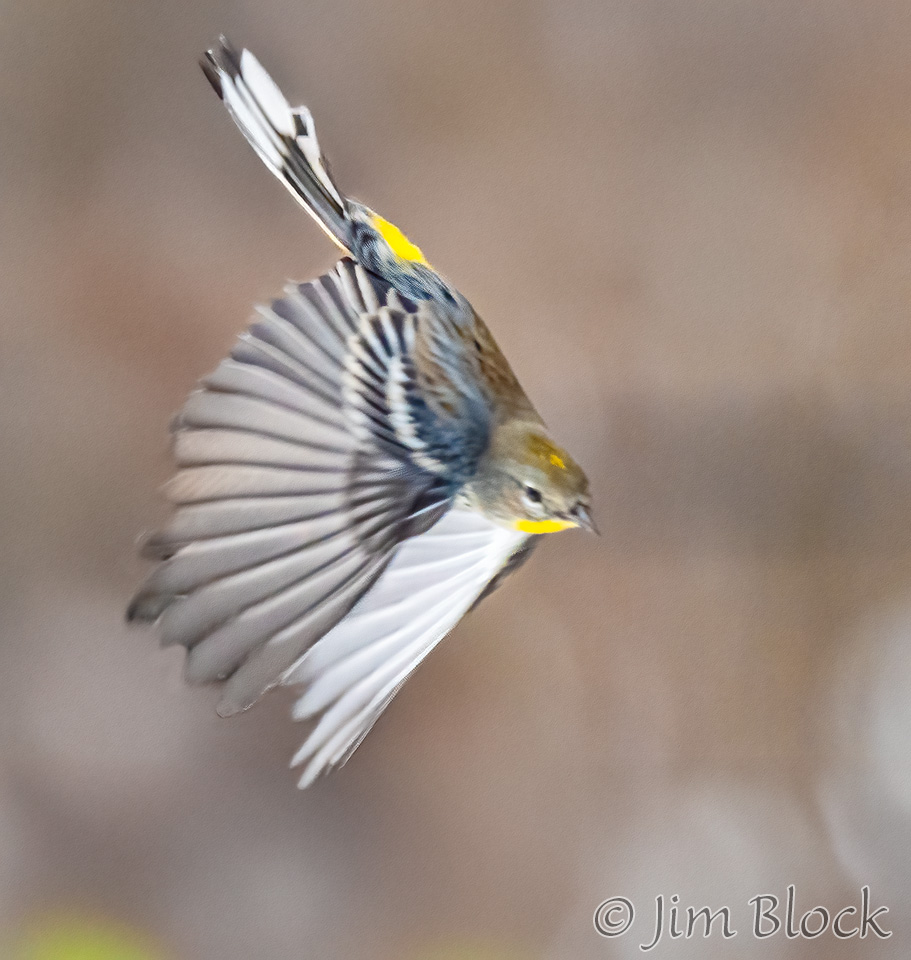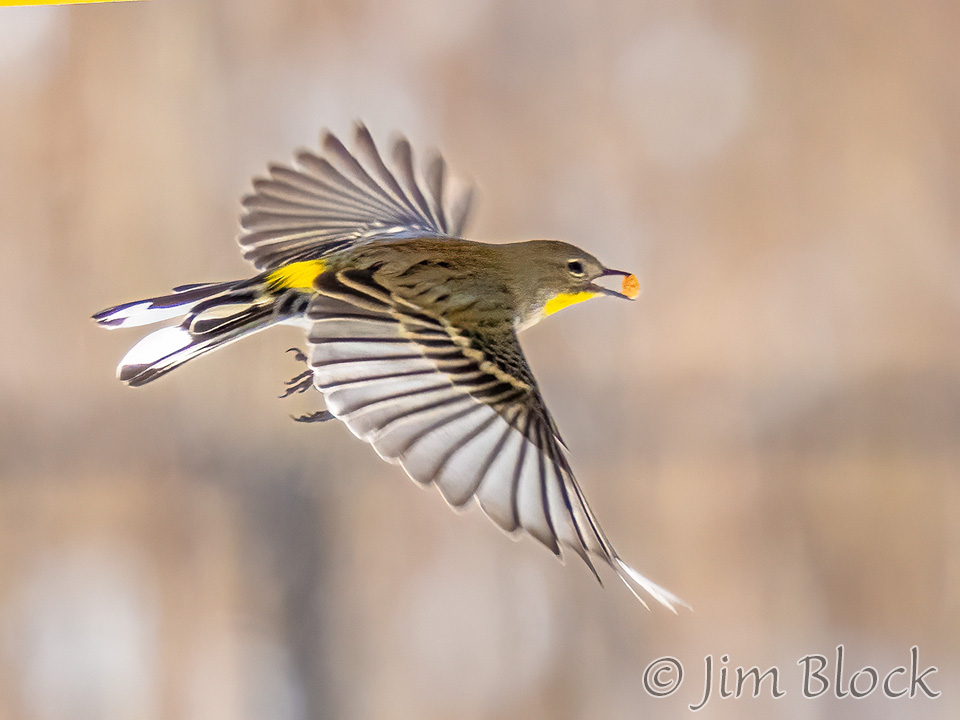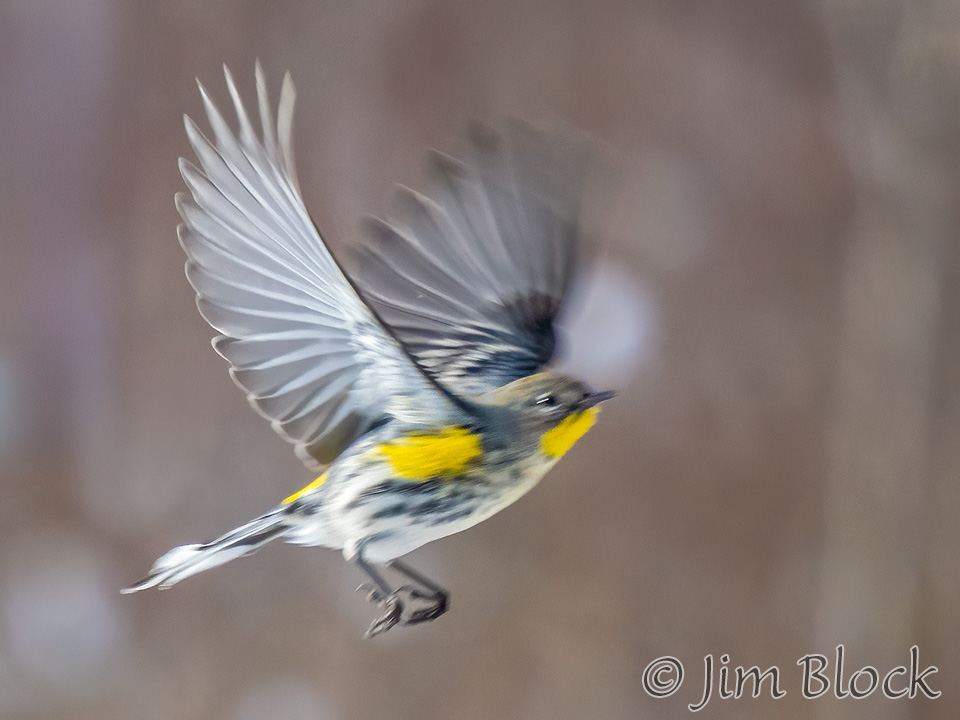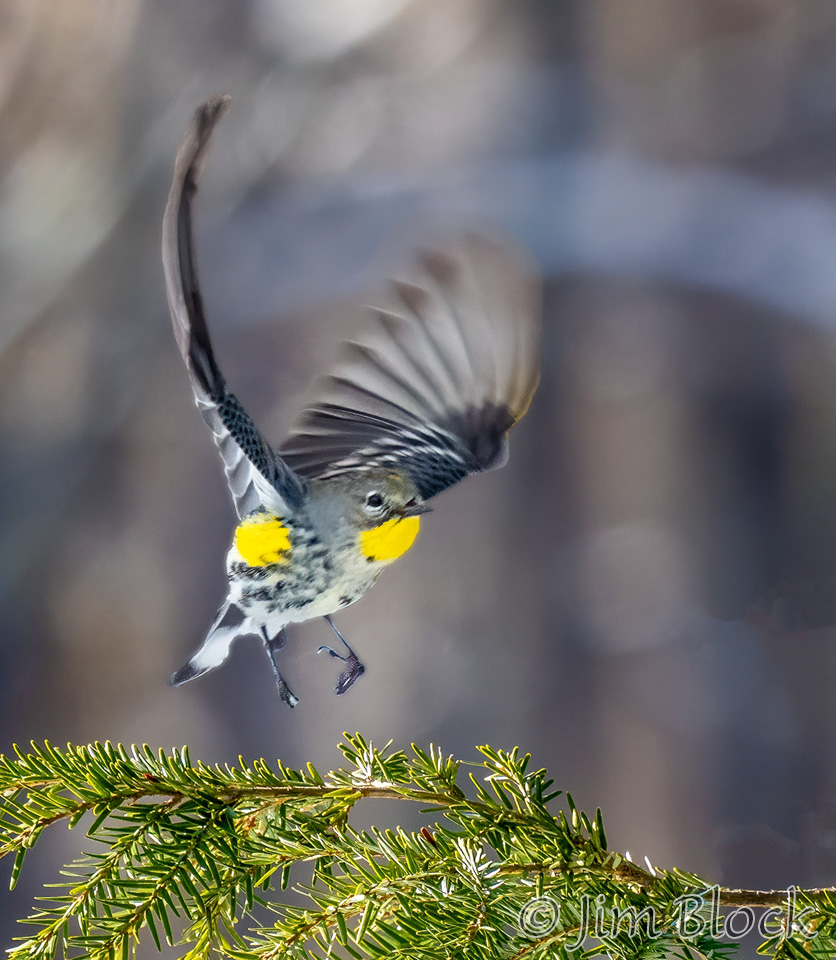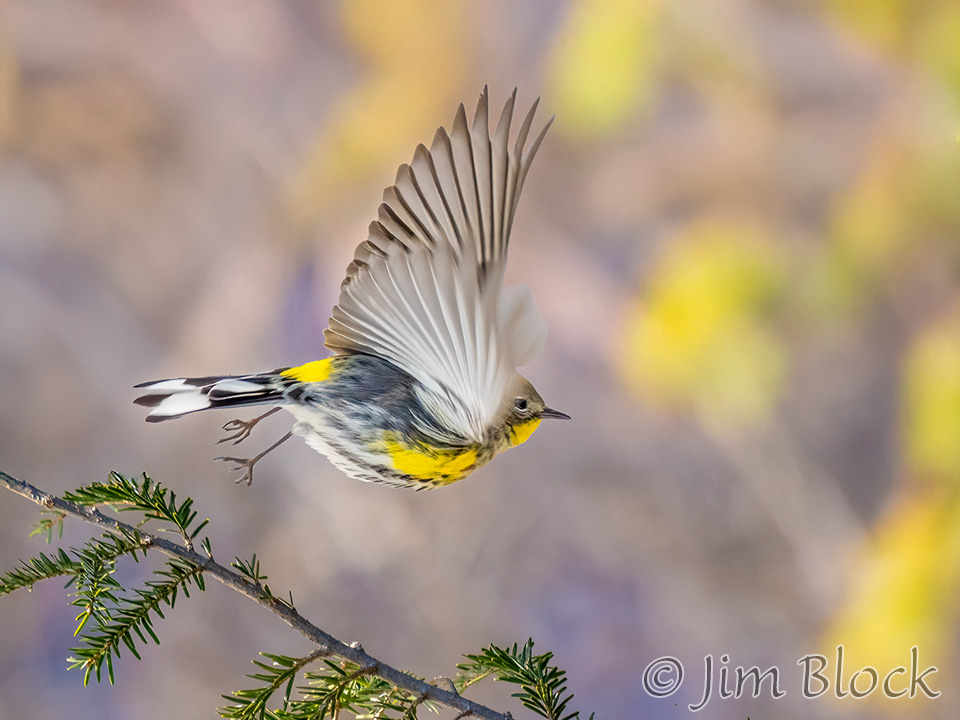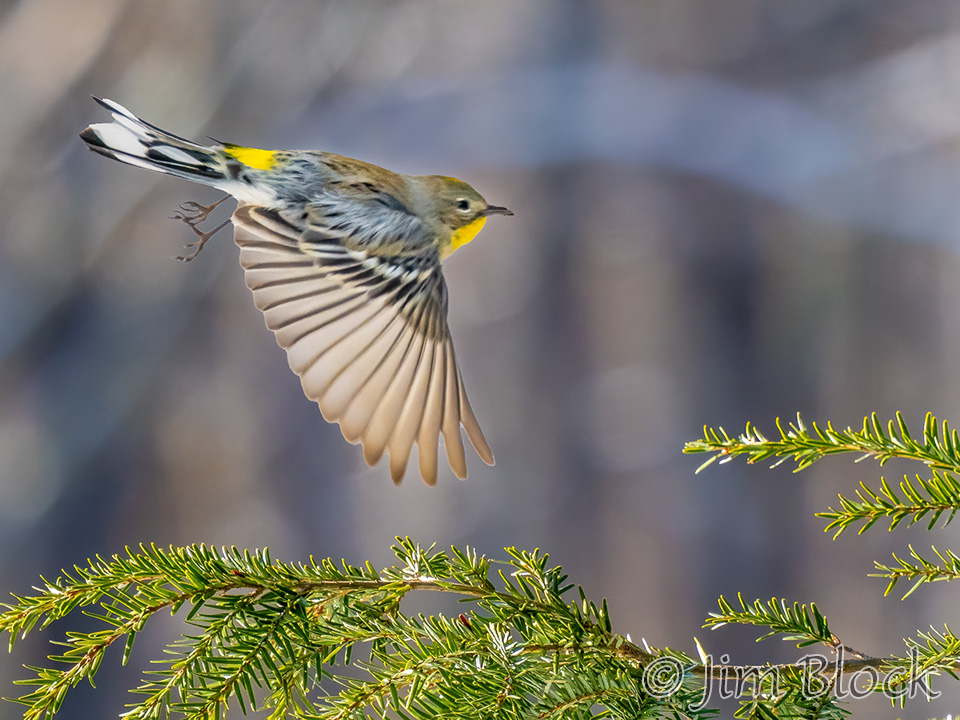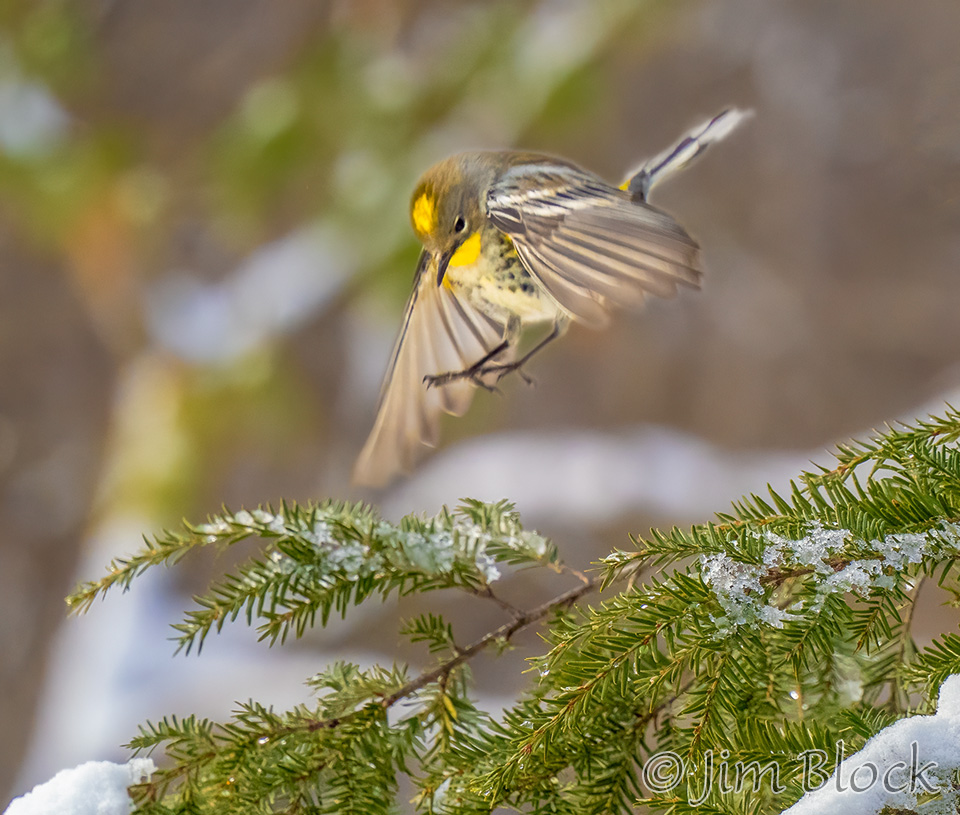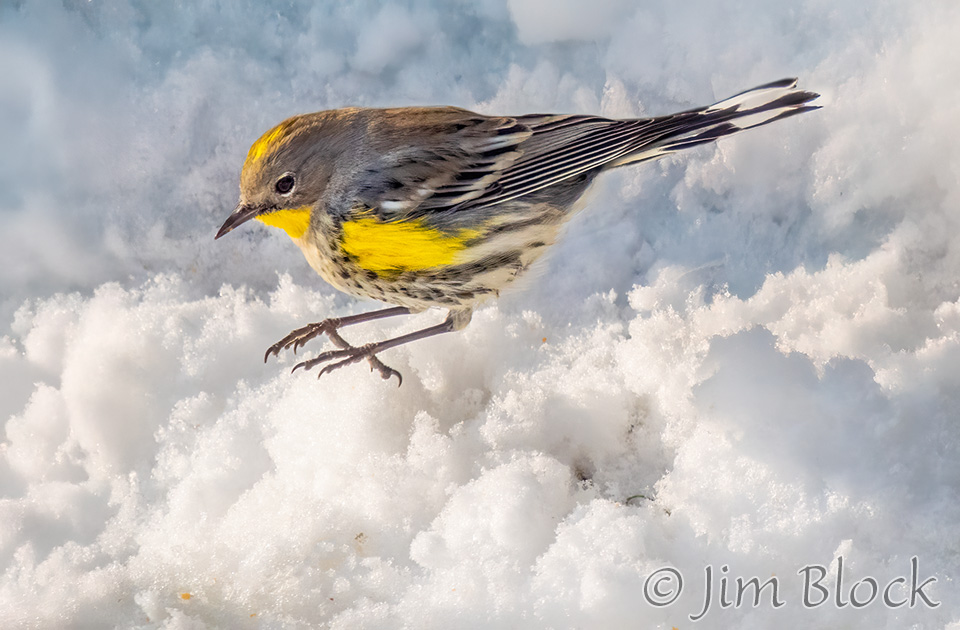Audubon’s Warbler in Hanover
Angela spotted a Yellow-rumped Warbler in her yard on December 2, 2024 and correctly identified it as a very rare Audubon’s Warbler. But she wasn’t sure, since they are rarely seen on the east coast: “My friend from Cape May County tells me that we aren’t supposed to have Audubon’s here; that she’s only seen them out West.”
So Angela contacted a local birder and after a few emails back and forth across the Connecticut River, I was asked to see if I could get confirming photos. I went immediately and was there from 3:30 to 4:00 pm when it got quite dark. But the photos I took confirmed the ID.
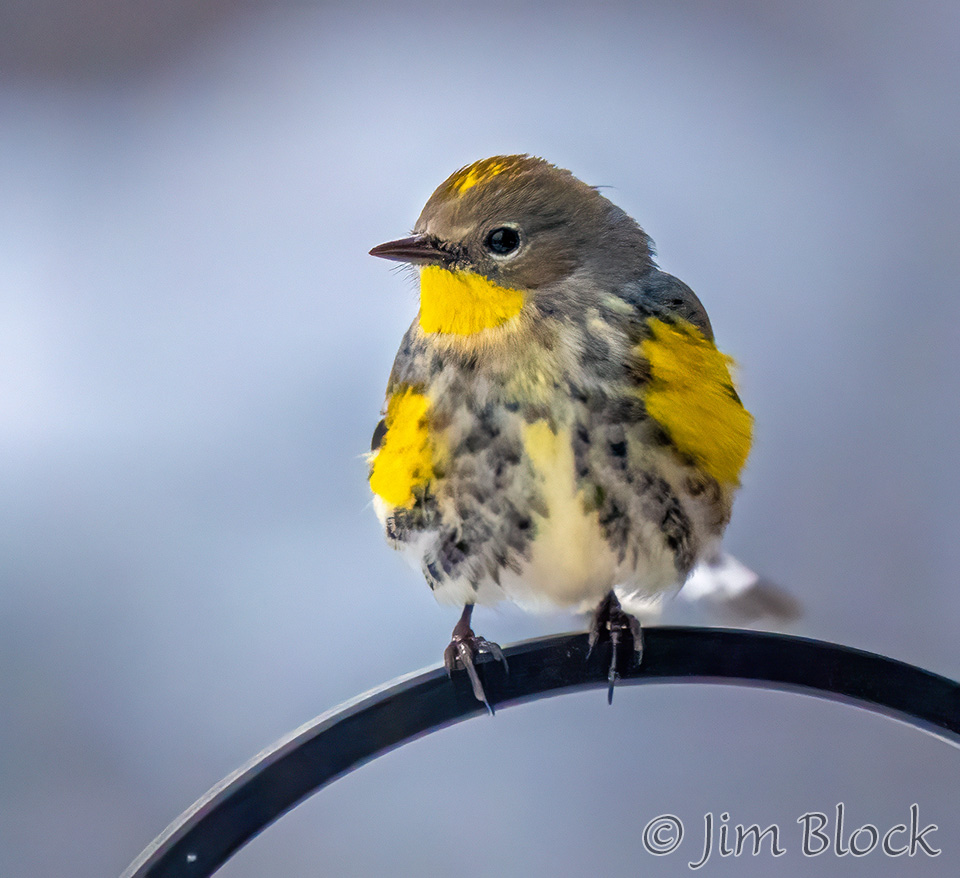
It is very unusual to see a warbler in winter in the Upper Valley. It is extremely rare to see an Audubon’s Warbler any time of year on the east coast. The Audubon’s subspecies of the yellow-rumped warbler is a western bird. The yellow-rumped warblers seen around here are almost always a Myrtle.
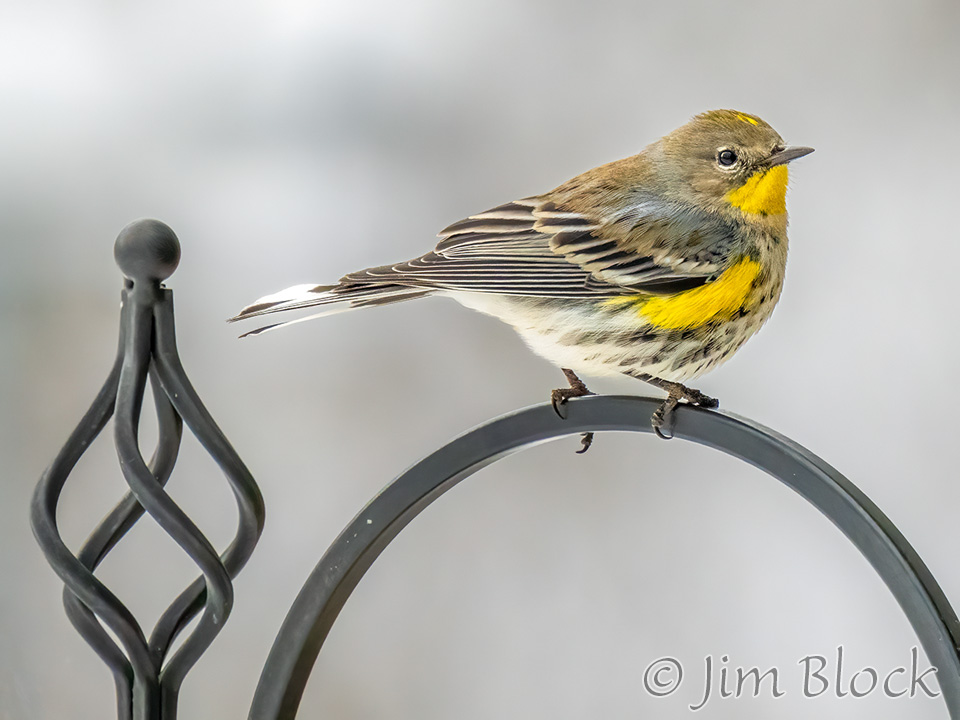
I returned to Angela’s yard in Etna on December 3, 4, and 5 to get more photos of this amazingly rare bird. We feared it might not survive the winter, so I wanted to get photos while possible. Here are some of the photos I took those days in early December.
On December 5th the warbler waited patiently for a Red-bellied Woodpecker to finish with the suet. The Audubon’s seemed to really like the suet, although it sometimes seemed to struggle with how to hold on to eat it.
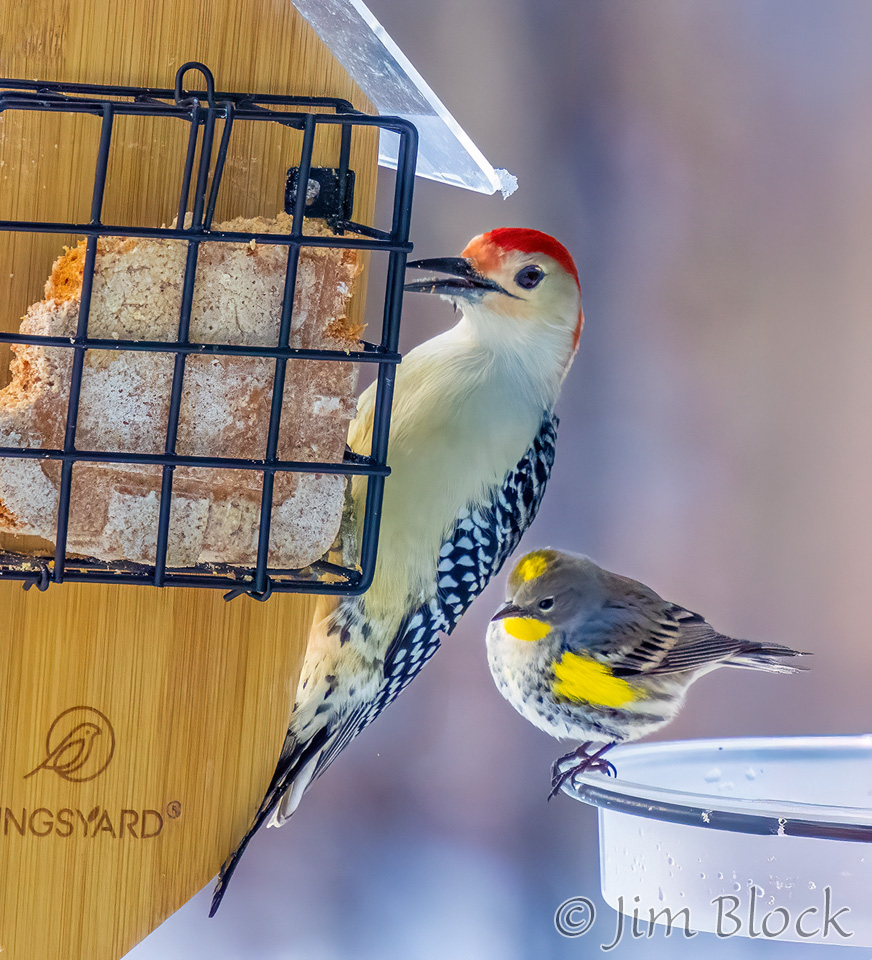
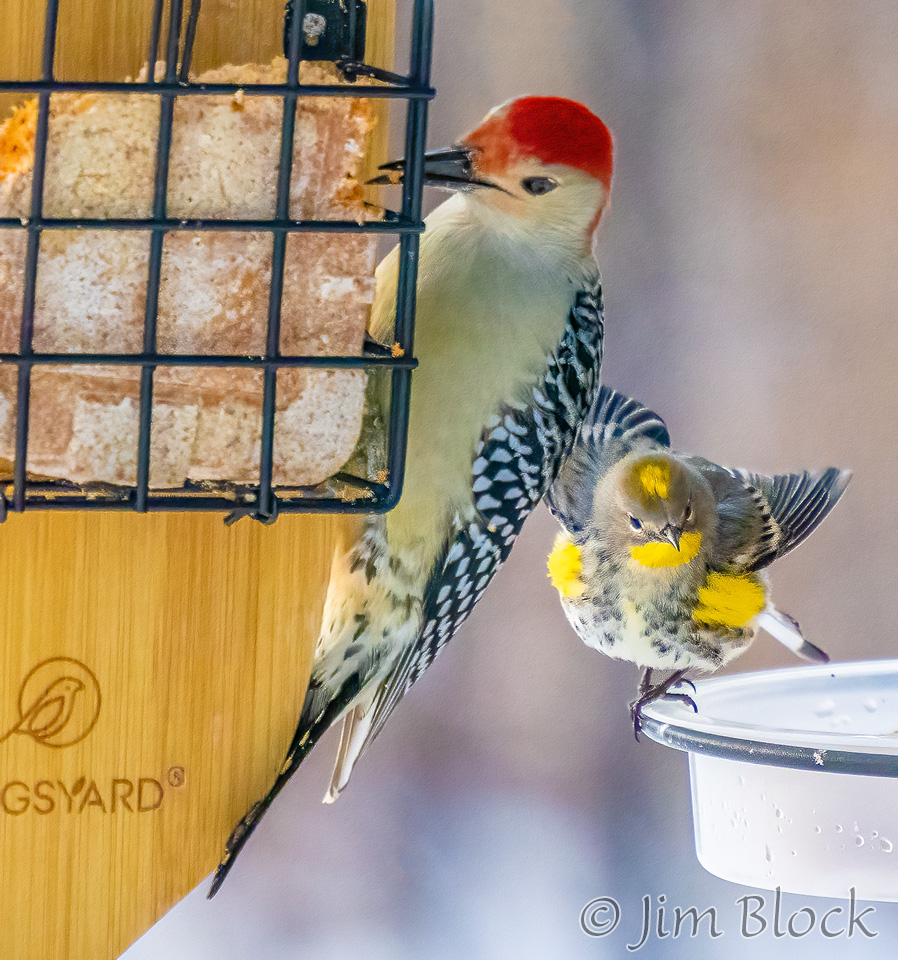
I returned to Angela’s yard again on February 8. The warbler had survived many below 0°F nights. Amazing!!! Would it make it to spring? We were now hopeful. I stood in the cold for an hour and took these photos.
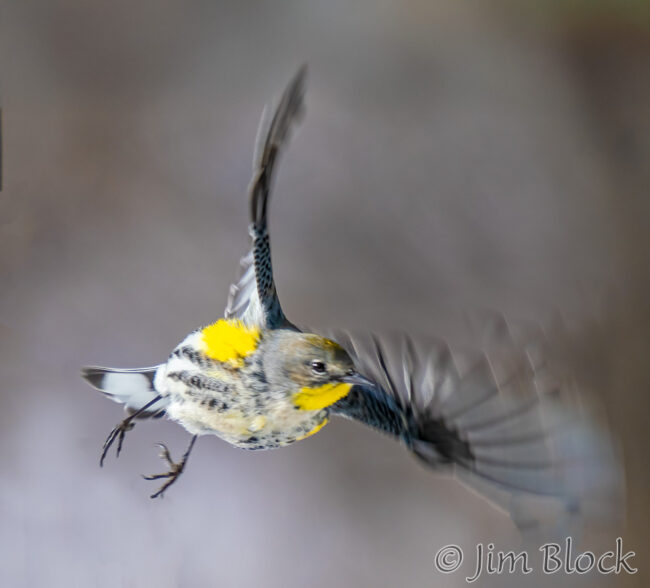
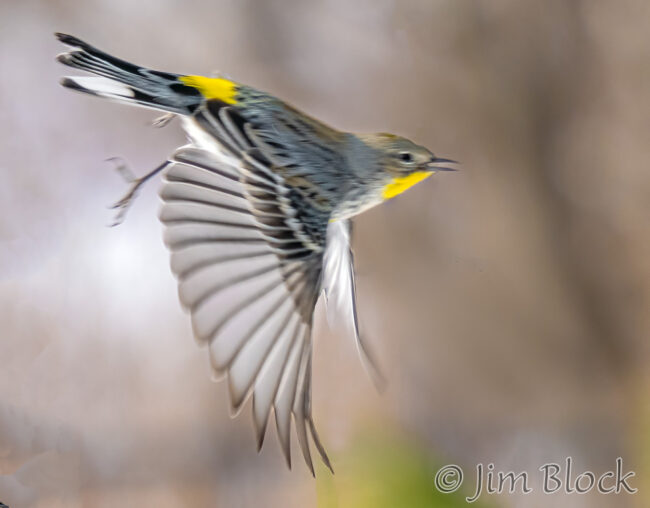
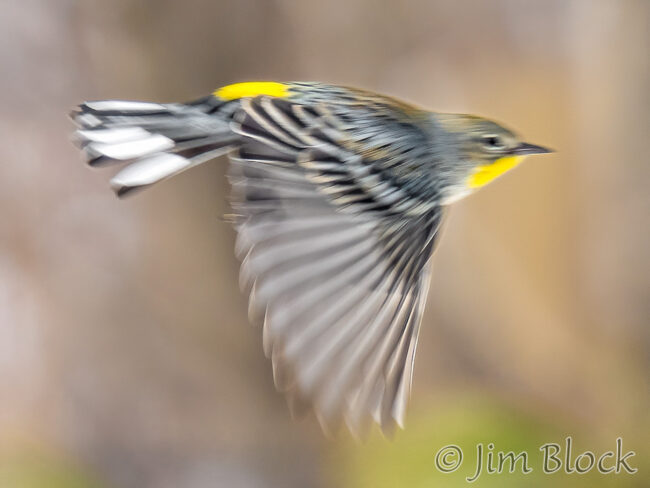
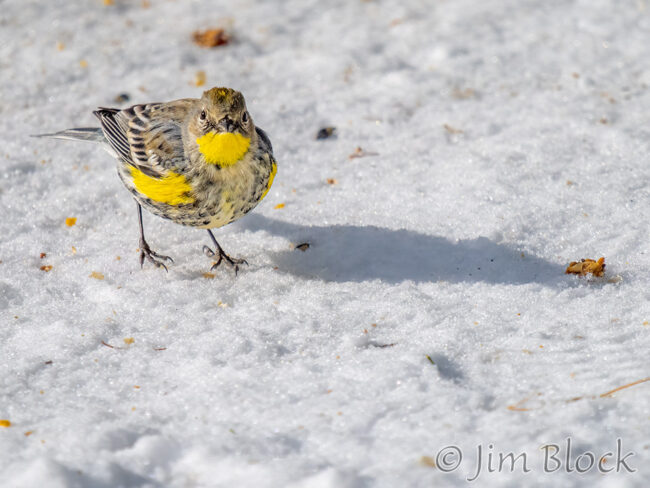

In early February George Clark suggested that “if the bird survives and remains in Etna, a molt might occur during March with a change in appearance to that of a mature male in the breeding season.”
It made it through the winter!!! On the second day of Spring, March 21, 2025, I returned and stood in the cold for 45 minutes. It seemed to be very cold every day I was there. It was snowing lightly as you can see in some of the photos. However, I saw no evidence of the molt that George predicted might start in March.
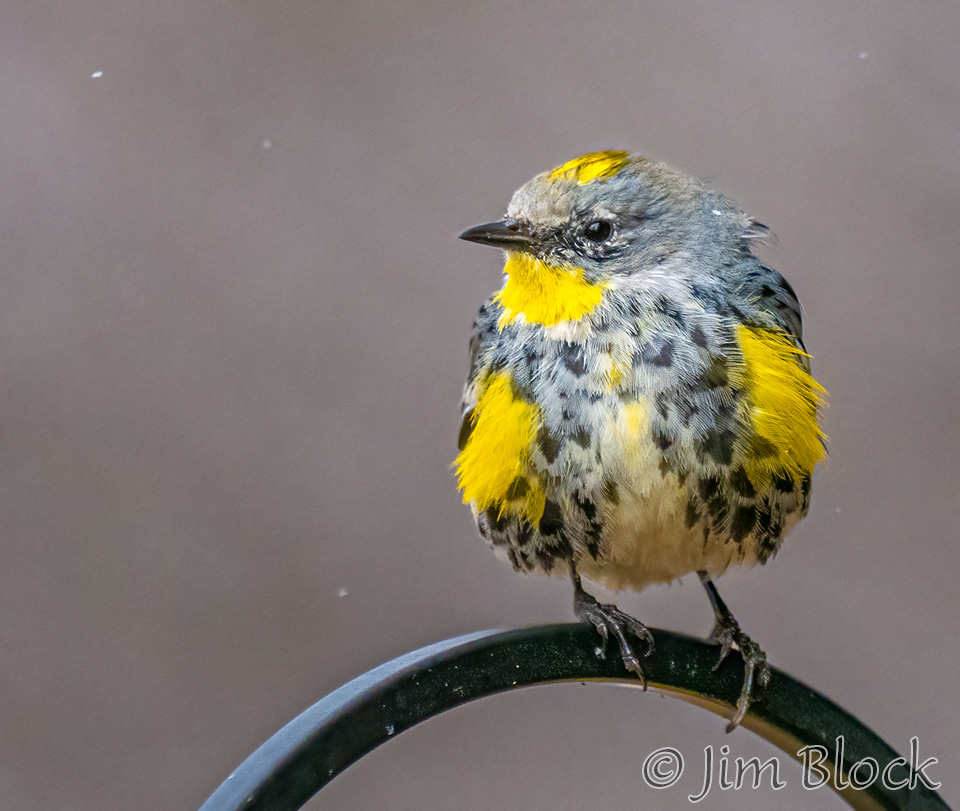
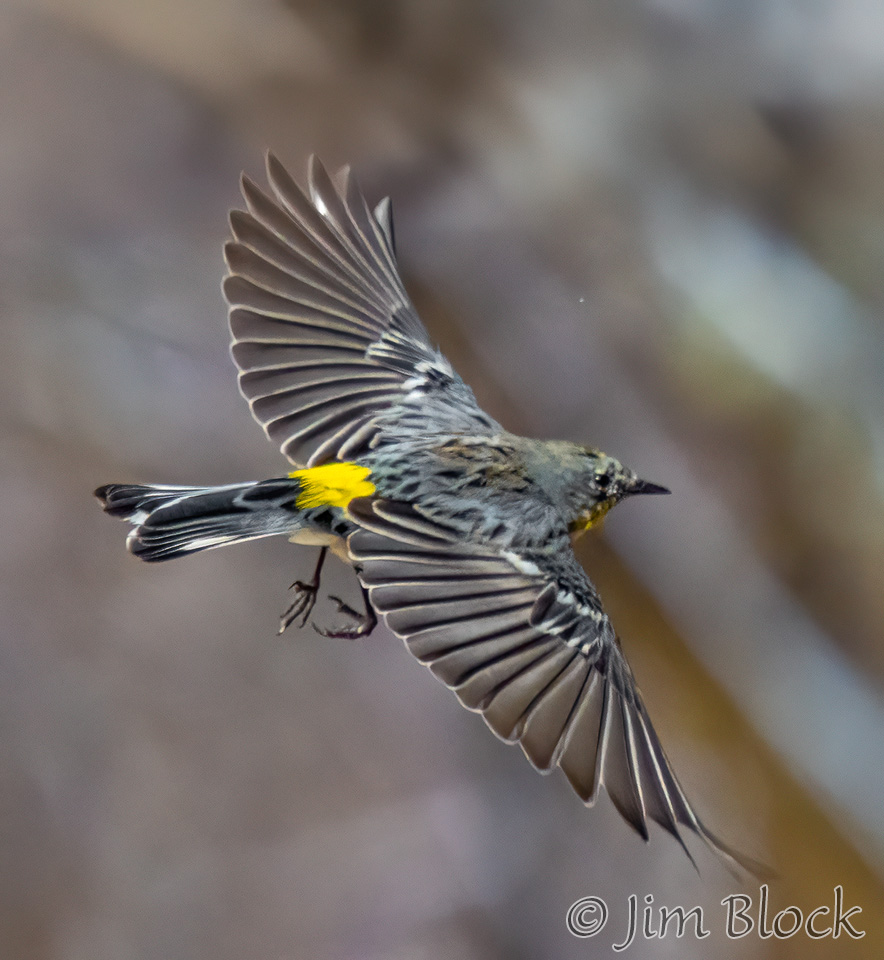


Having survived one of the coldest and snowiest winters in recent years, the Audubon’s Warbler was quite feisty. He certainly took exception to a goldfinch that was trying to hog its perch.
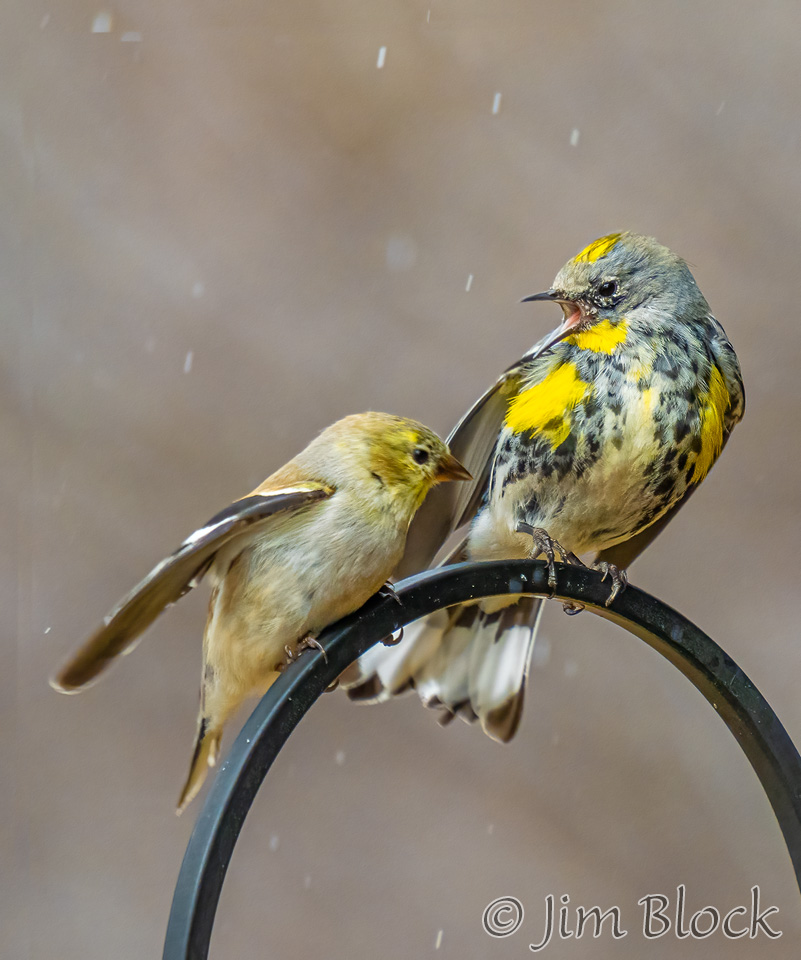
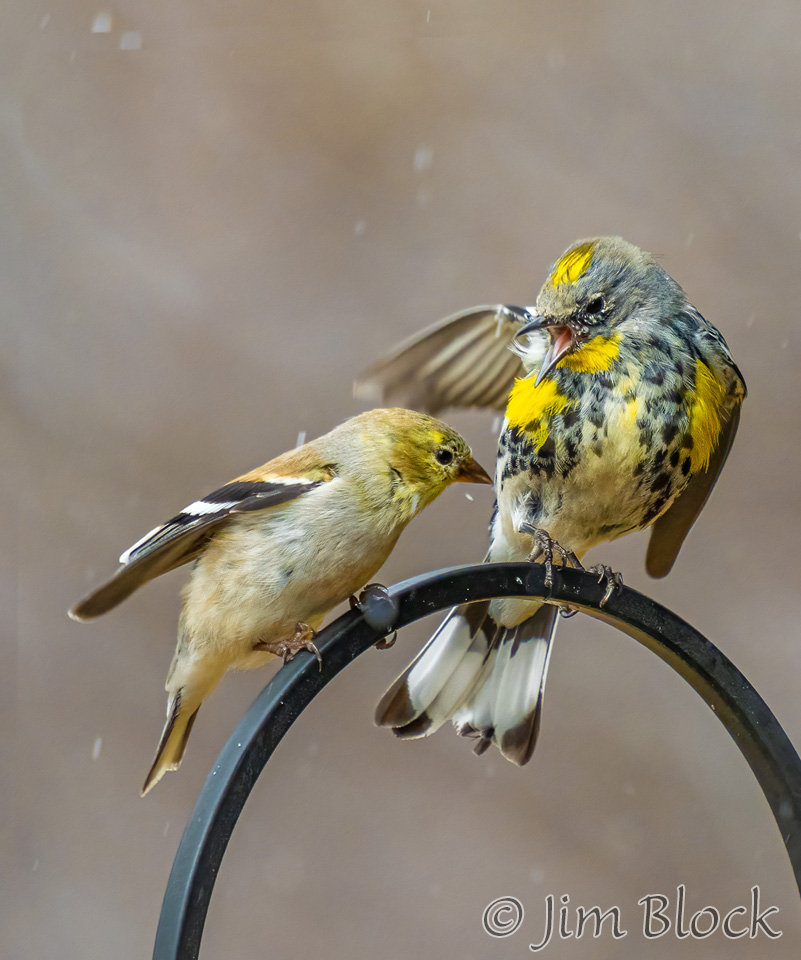
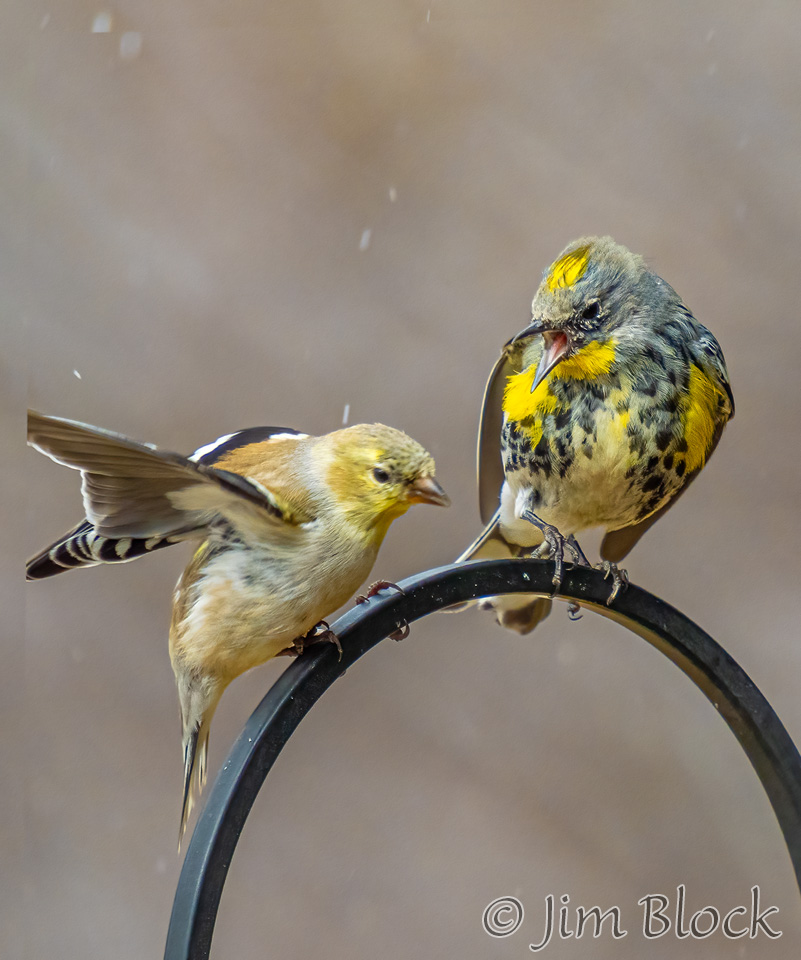
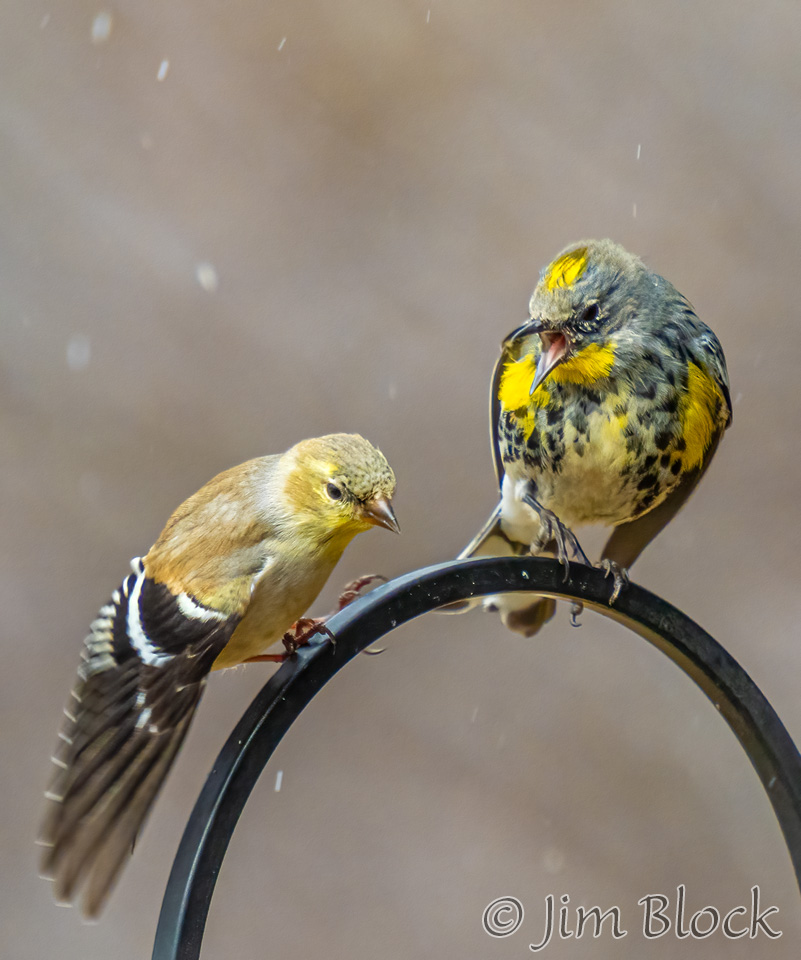
Although the warbler had not been spotted all morning, I returned late morning on April 5th hoping to get photos of the bird in molt. As usual I got quite cold standing still while waiting. But after an hour I was rewarded with an appearance by the warbler. The molt George had predicted had happened or at least begun. The bird looked quite different.
Compare the photos below from March 21 and April 5.

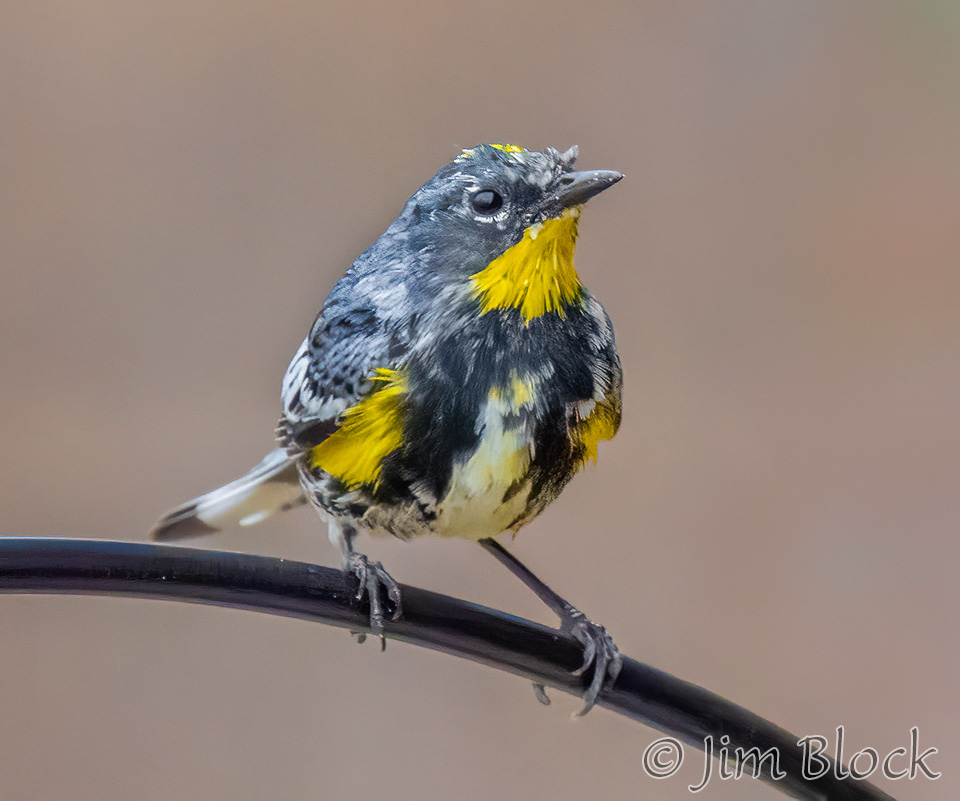
Here are those two photos side by side for easier comparison.
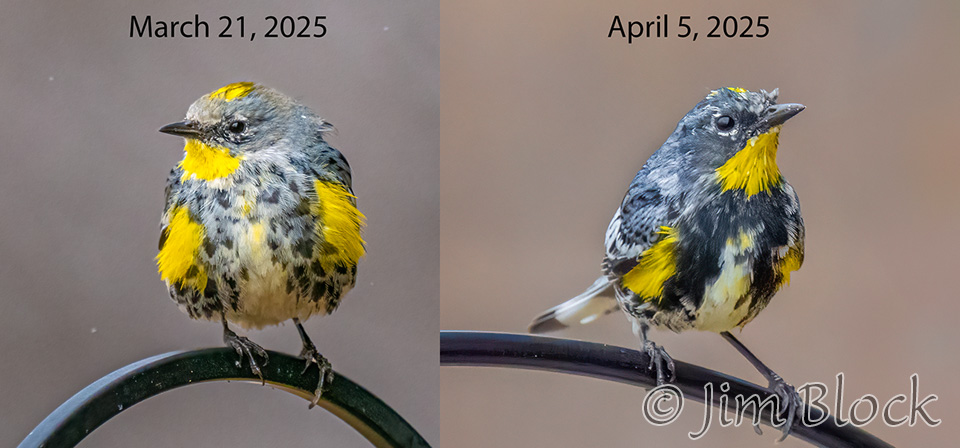
You don’t often get to compare plumage two weeks apart, knowing that it is certainly the same bird. The odds of two different Audubon’s Warblers visiting the same NH yard any time of year are astronomical.

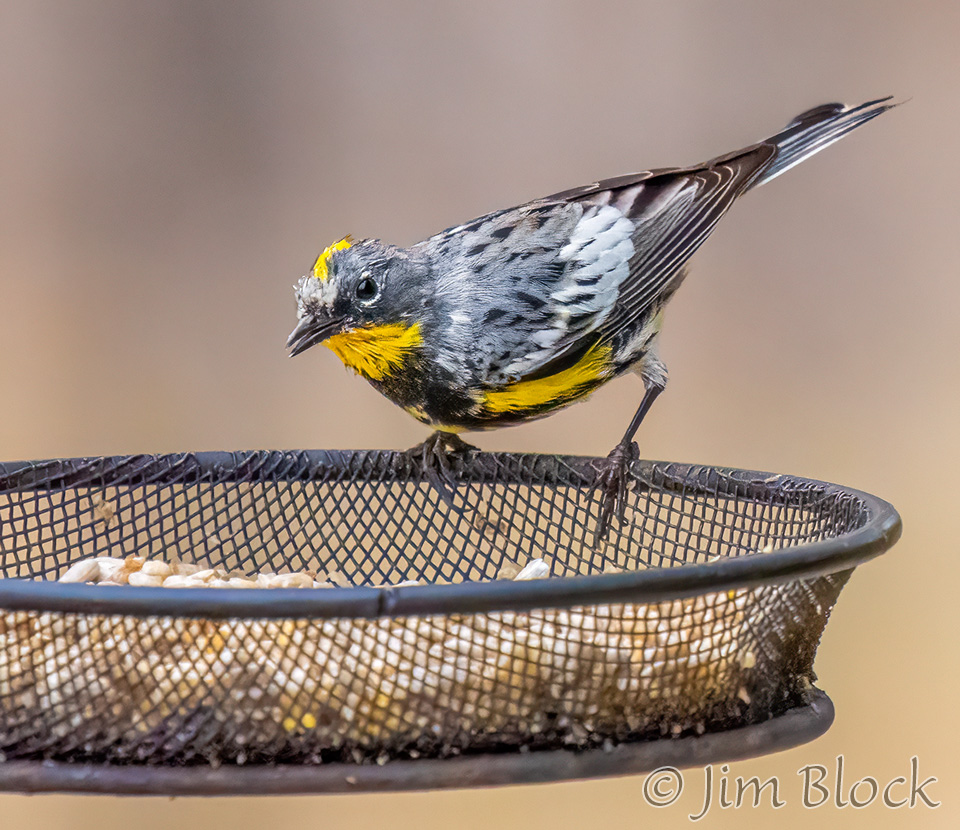
This bird sure liked suet. Angela keeping it stocked all winter no doubt significantly helped the bird survive this cold, snowy winter.
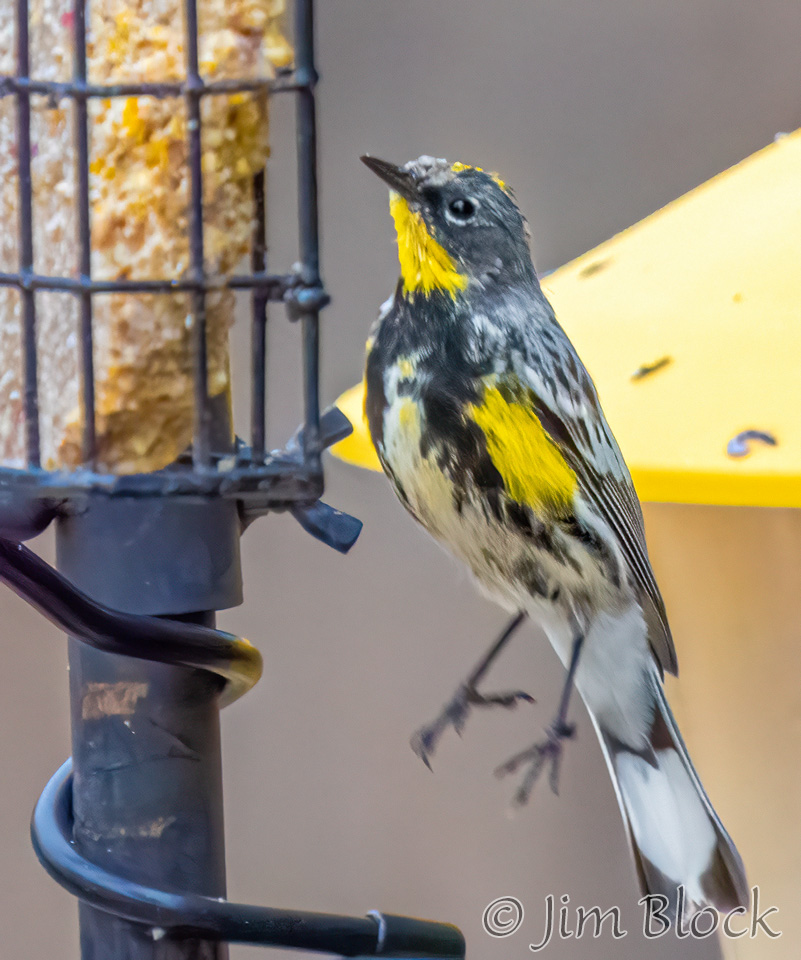
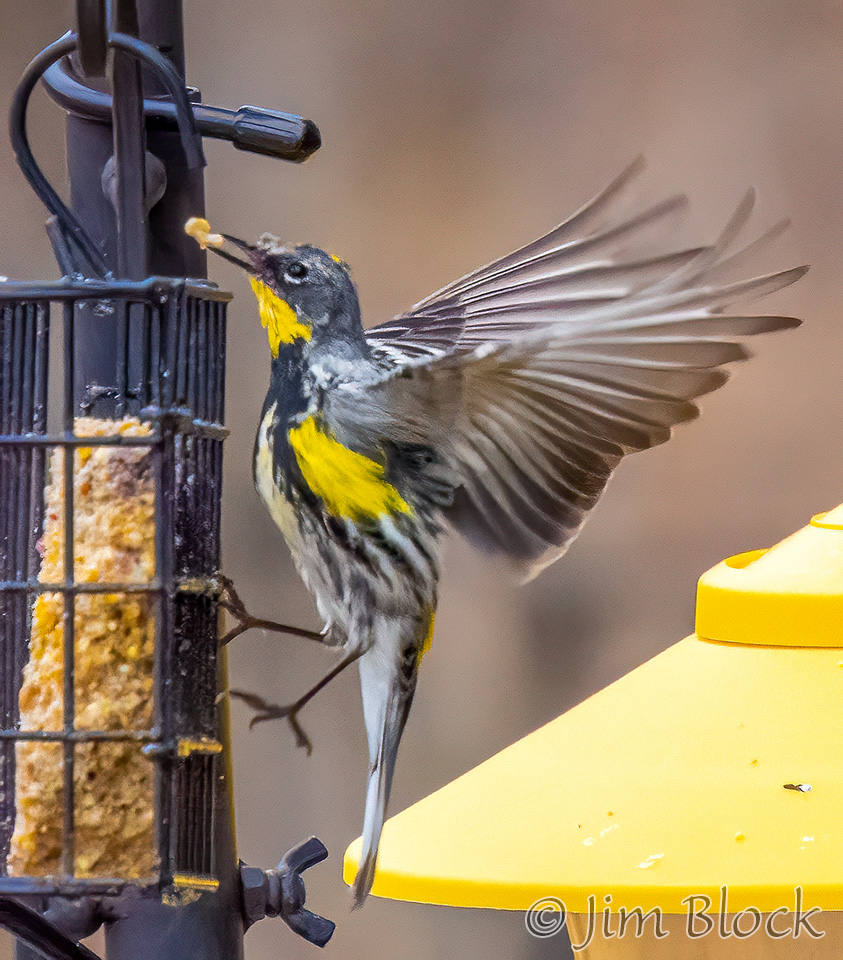
A fairly recent DNA study concluded that Audubon’s and Myrtle should be considered separate species as they originally were listed in the earlier part of the 20th century. Here is the breeding range of the various yellow-rumped warblers from that study.
